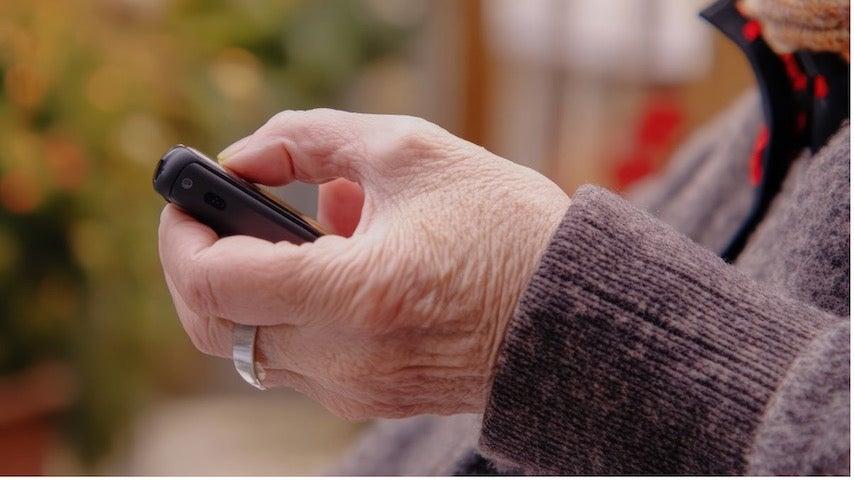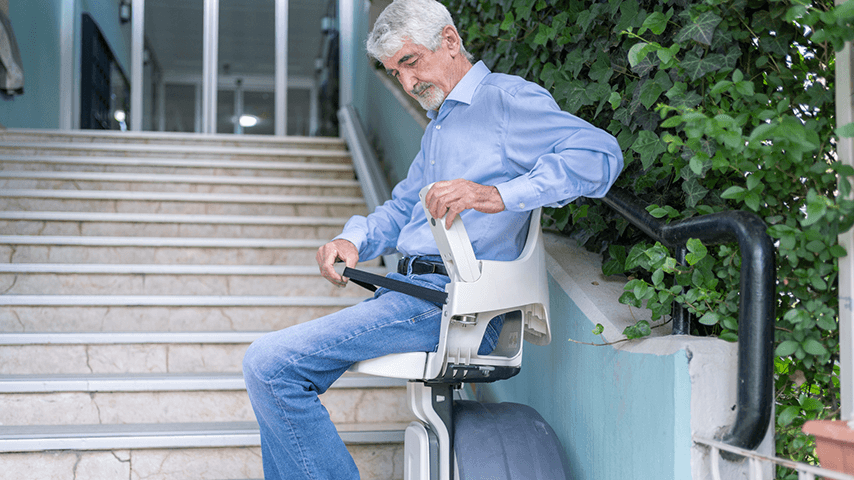
Related Topics
Medical alert systems can be lifesaving tools that call emergency services when you need help. Along with exercising regularly, reviewing medication with your doctor, and fall-proofing your home, using a medical alert system can help prevent falls when you’re at home or on the go.
But if you’ve never used a medical alert system before, it can be difficult to know what features you need. Which are essential, and which can you skip to save a little money? We’re giving you the details below.
What are medical alert systems, and how do they work?
Medical alert systems provide users with immediate help in an emergency. Most medical alert systems include a wearable device with a button to press if you need help.
You can choose a monitored or unmonitored medical alert system. Monitored medical alert systems connect you to the device's response center if you press the emergency button. The monitoring center staff will ask questions to decide if you need emergency services or if they should reach out to a designated contact for you, like a family member, care partner, or friend.
If you wear an unmonitored medical alert device, pressing the emergency button sends an alert directly to emergency services like 911.
While they cost more, we recommend monitored systems to ensure you can get the right help when you need it.
Types of medical alert systems
Medical alert systems can be in-home or mobile systems.
In-home medical alert systems
An in-home medical alert system uses a base station (similar in size to a landline telephone) with a two-way speaker that lets users talk with the call center if they need help. Your in-home system may also include a wearable device with a button to press if you need help and can't reach the base station.
In-home medical alert systems may connect via your landline, plugging into your phone jack, or through your cellular carrier. It’s important to consider the range of an in-home device, as you want to connect with it in all areas of your home.
Mobile medical alert systems
A mobile or on-the-go medical alert system is usually a wearable device users can take wherever they go. Most portable devices are worn as necklaces or bracelets, clipped onto a belt, or in a pocket. Many also offer GPS tracking, signaling your location to the monitoring center in an emergency or a caregiver through the device’s app.
Important medical alert system features to consider
Most monitored medical alert systems include three key features: a button to press in an emergency, two-way communication with the monitoring center, and 24/7 monitoring services. These three features are essential to getting the most out of your medical alert system.
When choosing a medical alert system, you may also want to consider devices that offer the following:
Fall detection
Falling is a common concern, and the risk of falling is often part of the decision to buy a medical alert system. Many brands offer systems with accelerator technology built into their wearable devices. This means the device automatically detects falls and calls the monitoring center for help. Fall detection services are an add-on to your regular medical alert system monitoring and cost an average of $10 more monthly.
“Many injuries and scenarios we see in the ER occur after falls," said Stephen Yeh, MD, a board certified emergency physician in Charlotte, North Carolina. "Sometimes these falls incapacitate a person enough that they may not be able to call for help.”
In-home coverage range
If you buy an in-home medical alert system, the device’s coverage range is key to deciding if it will work for you. The coverage range is the furthest you can be from your device while maintaining your help button’s connection to the base. Most devices offer a range of 200–1,400 feet. Because the median size of new houses built in 2023 was 2,233 square feet, it’s best to look for an in-home range of at least 1,000 feet to be sure you’re covered.1
Cellular vs. landline connections
At-home medical alert systems connect your device to the response center via your home’s landline or a cellular network. Connecting through your phone jack is an easy and reliable option for those with a landline phone connection. If you choose a cellular system, make sure it works with a cellular provider like AT&T or Verizon that offers strong coverage at your home. You don’t need to be current subscribers to the cellular provider, but you should confirm they have good coverage in your area. To check coverage, see the AT&T and Verizon coverage maps.
Wearables
Most medical alert systems include a wearable device. Most are water-resistant, so you can continue to wear them while you shower. Wearable devices include pendants or necklaces, medical alert watches or bracelets, and emergency buttons you can clip onto a belt loop.
GPS tracking
If you plan to take your medical alert system on the go, a device that offers GPS tracking can help you stay connected while ensuring you’re protected. GPS-enabled devices allow the device’s monitoring center to see your location in an emergency and send help. Many devices with GPS tracking also offer an app for users and caregivers, offering additional peace of mind.
Battery life
The battery life of medical alert systems can vary widely, from hours to days. Most medical alert devices have a battery life of at least 20–24 hours. Some promise up to 10 days of coverage before recharging.
Caregiver monitoring
Many medical alert systems now offer a companion app to users and caregivers. The app allows for device tracking, updated battery status, a log of monitoring center calls, a place to update medical information, and more. This can be especially useful for caregivers of people with dementia.
Warranty
Many medical alert systems offer warranties to replace damaged or defective devices. It’s important to choose one with a warranty that protects against equipment failure and defects that can happen with regular use. Some brands also offer supplemental protection plans for extra fees.
The bottom line
When choosing a medical alert system, it’s important to consider the features your device includes and whether it will work for your needs. Look at battery life, coverage range, fall detection, and GPS protection. And take the time to understand what type of system will suit your needs to get the most out of your device. The extra security offered by a medical alert system can give you peace of mind while helping you maintain your independence.
Sources
1. United States Census Bureau. Highlights of 2023 Characteristics of New Housing. Found on the internet at https://www.census.gov/construction/chars/highlights.html



